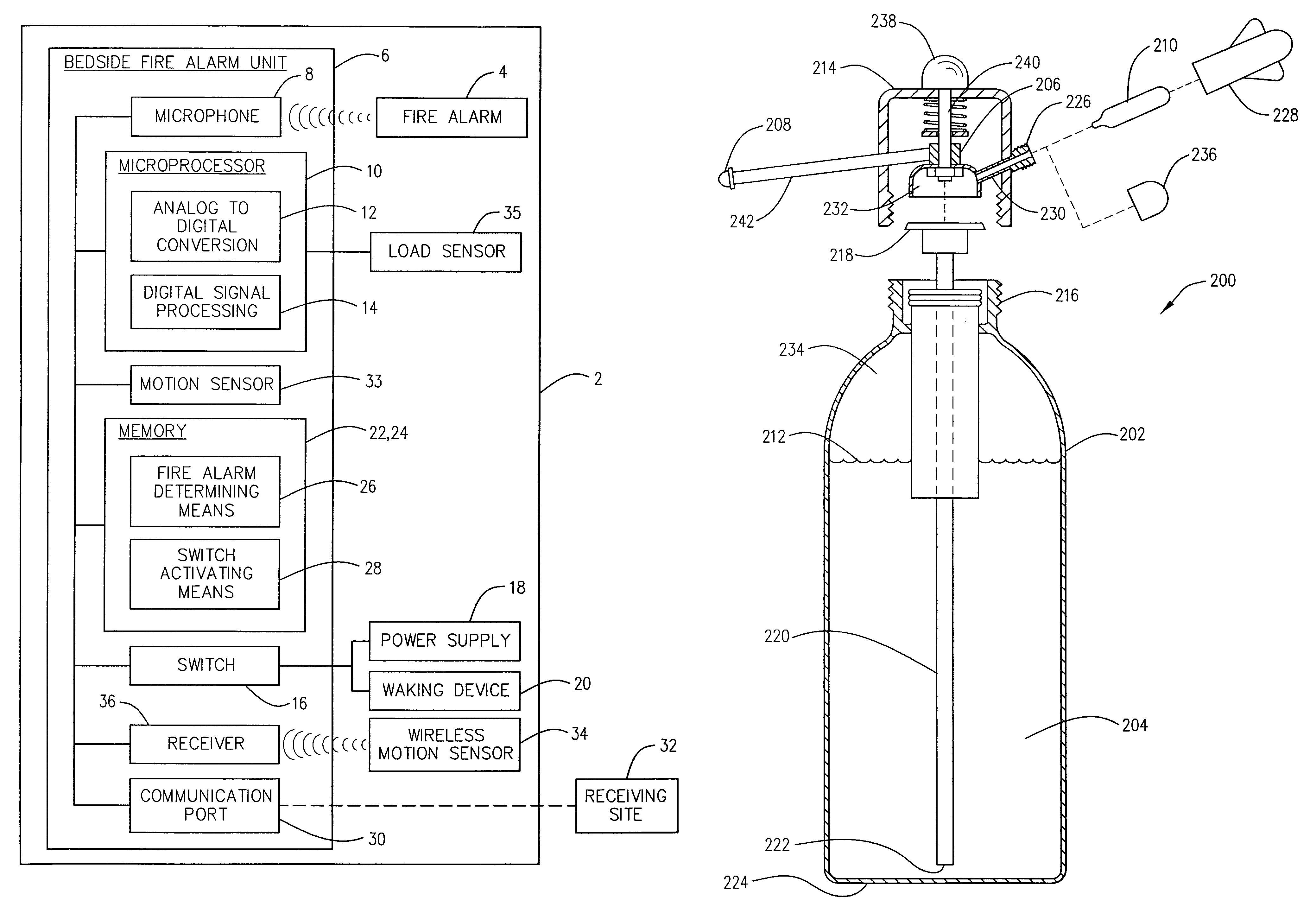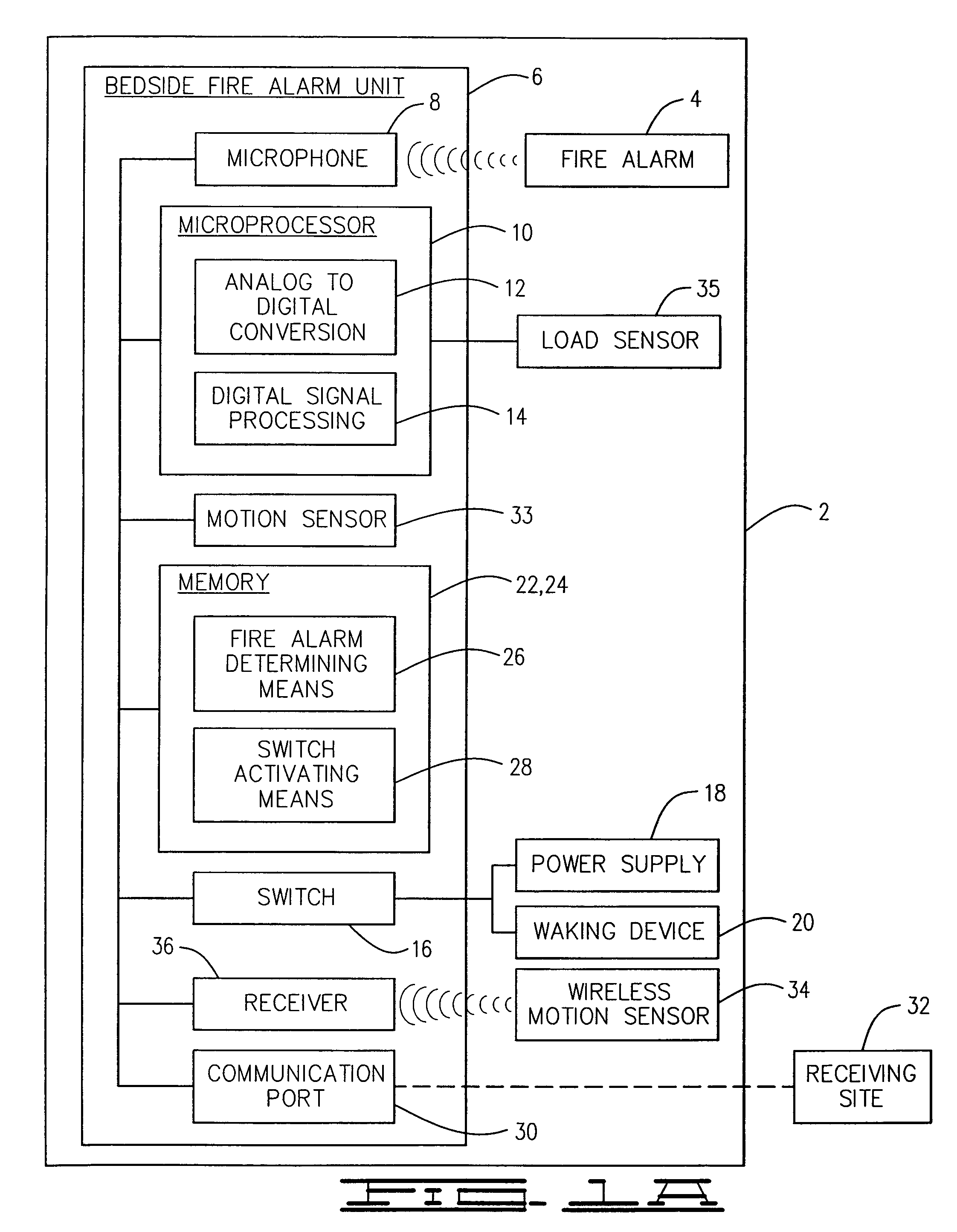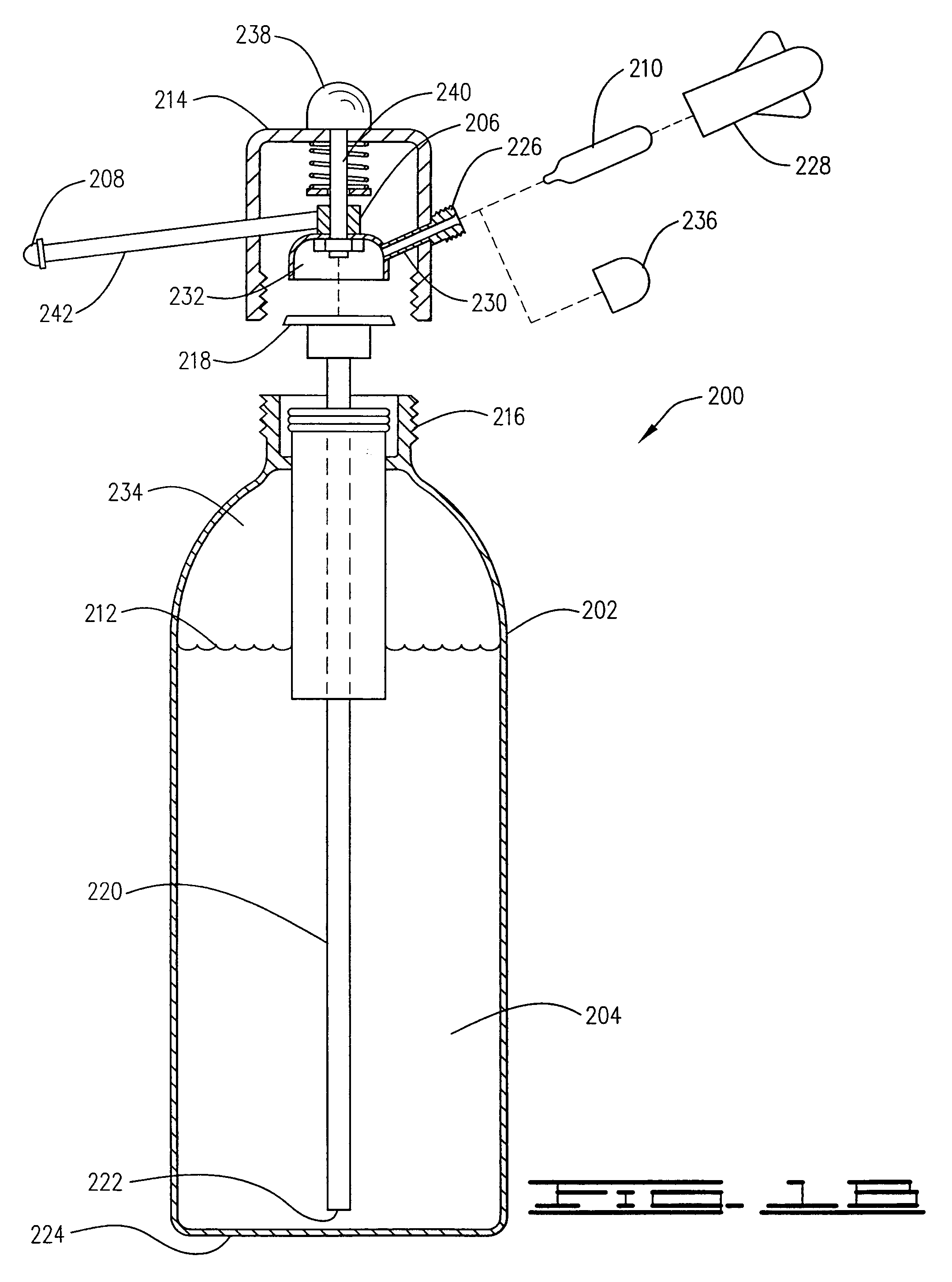Alert system with enhanced waking capabilities
a technology of alert system and waking capability, applied in the field of sound monitoring methods, can solve the problems of limited damage, inability to avoid fires and unwanted intruders, and inability to always avoid them
- Summary
- Abstract
- Description
- Claims
- Application Information
AI Technical Summary
Benefits of technology
Problems solved by technology
Method used
Image
Examples
example
[0196]A dog bowl was adapted to monitor the contained water level and send an alarm when the water level reached a predetermined low level. As shown in FIG. 14, the water level measurement 142 was monitored by applying a very small voltage supplied by two AA batteries 144 across two contacts 146 in the inside lower portion of the dog bowl. When the water level dropped below at least one of the contacts, conduction between the contacts no longer occurs and the code generator 104 was activated. The pseudo-random acoustic code generator 104 and alert determining means 112 were combined in a microcontroller from Texas Instruments (part number MSP430F1121A) that included an oscillator 116, timer 148, microprocessor or CPU 119′, and comparator (alert determining means) 152. The oscillator 116 used a quartz crystal 154 which provided a clock rate for executing code and for generating the pseudo-random signal code. The audio signal code passed through a simple first order low pass filter 15...
PUM
 Login to View More
Login to View More Abstract
Description
Claims
Application Information
 Login to View More
Login to View More - R&D
- Intellectual Property
- Life Sciences
- Materials
- Tech Scout
- Unparalleled Data Quality
- Higher Quality Content
- 60% Fewer Hallucinations
Browse by: Latest US Patents, China's latest patents, Technical Efficacy Thesaurus, Application Domain, Technology Topic, Popular Technical Reports.
© 2025 PatSnap. All rights reserved.Legal|Privacy policy|Modern Slavery Act Transparency Statement|Sitemap|About US| Contact US: help@patsnap.com



